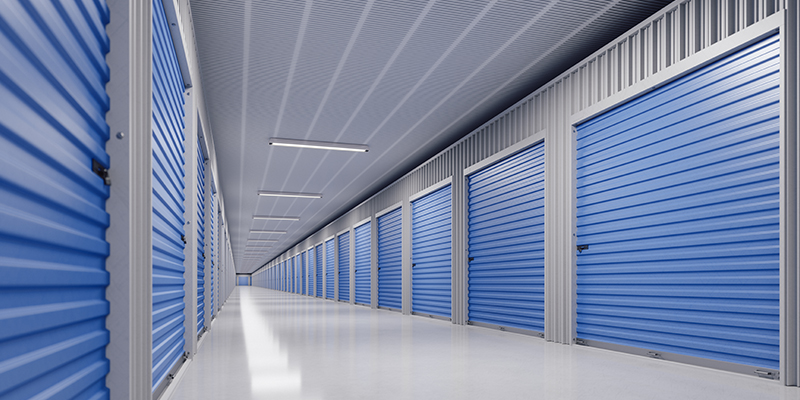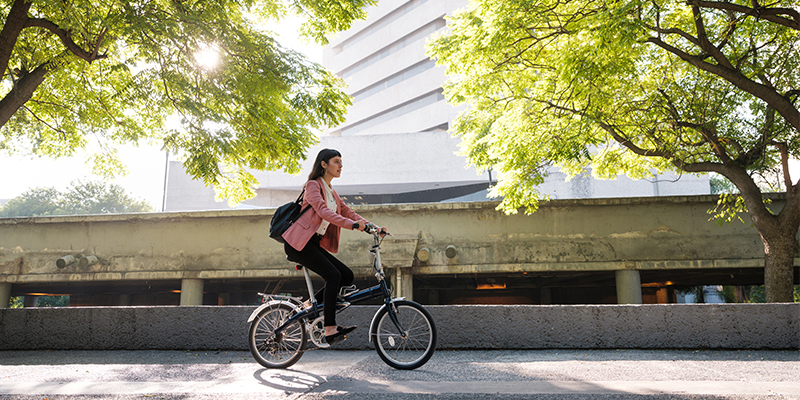E-commerce provides easy access to goods with the click of a button, filling homes with stuff, stuff and more stuff. Meanwhile, the trendy minimalist lifestyle emphasizes only keeping what is needed and eliminating everything else. Where does the average American end up on the spectrum of goods ownership? As it turns out, among apartment renters, one in five uses self-storage to manage their belongings, at least temporarily.
Self-storage is a rapidly developing service that assists in life events such as moving, downsizing or changes in family size. More recently, the widespread need to create home offices with the rise of working from home during the COVID-19 pandemic has added to the traditional sources of demand for self-storage. Renters, in particular, are finding more use for storage away from home as they move more often, and apartments are generally smaller. On average, renter-occupied homes in the U.S. are smaller than owner occupied homes by largely 800 square feet. As a result, many renters are using self-storage as an extension of their homes.
A recent RentCafe survey found that 21% of U.S. renters are currently leasing a self-storage unit, while an additional 12% of them are planning to rent a unit in the future.
Demographics of Renters who use Self-storage
About 20% of the renters who live in an apartment use self-storage, and an even higher percentage (25%) of those who rent single-family homes do the same. Generally, people renting single-family homes have bigger families with correspondingly bigger storage needs.
By age group, Gen Xers are the most interested in self-storage, with 44% of the renters in this generation declaring that they currently use a unit. They are followed closely by baby boomers; 38% of this generation’s renters said they use the service. About 30% of millennial renters also rely on self-storage.
Women are significantly more likely to use self-storage than men – about 51% of women renters are leasing a unit, and another 22% are planning to access the service in the future. When it comes to men, 22% of them responded that they are renting a self-storage unit, while an additional 14% will probably do so in the future.
It’s not the renters who live in studios or one-bedroom apartments that are the most likely to rent self-storage, but residents of three-bedroom homes or apartments. About 28% of those who rent a three-bedroom home stated needing a storage unit for their extra belongings, compared to only 20% of those who reside in a studio apartment. People who rent larger homes are probably more established and have families, or maybe they live with roommates, which explains the need for extra storage in this category of renters.
The interest shown lately by consumers for self-storage has led to a staggering increase in the development of the sector – currently, there are over 1.6 billion square feet of storage space nationally, of which over 45 million square feet were delivered in 2021 alone. Another 50 billion square feet of new space are expected to be delivered this year. The average price for a 100-square-foot self-storage unit hovers around $132 nationally, representing a 2% year-over-year increase. However, costs vary significantly depending on location: for example, a 100-square-foot self-storage unit in Seattle costs around $168 per month, while one in Charlotte, North Carolina, is a little over $100 per month.
What’s Being Stored in Self-storage
About 29% of the renters using self-storage said they primarily needed a unit to store furniture, and another 24% are using it for their extra clothing. Other frequently stored items by renters are home appliances and equipment (21%).
Women and men store furniture in almost equal proportions (29% vs. 28%). However, women are far more likely to store clothing; 28% of them rented a self-storage unit mainly for this purpose, compared to only 18% of the men. On the other hand, men hold on to their sporting items and hobby gear more intensely than women. About 14% of the men use their storage unit primarily for such items, while only 9% of the women do the same.
Primary Drivers of Self-storage Usage
Moving can be logistically complicated, and a self-storage unit helps by allowing people to temporarily store some or all their items until the new home is ready. Confirming this reality, 42% of the renters who are using self-storage said that moving is the reason they needed a unit.
A lack of sufficient storage space at home drove another 31% of them to seek self-storage. A self-storage unit located close to home helps people maintain a neat and tidy interior while still holding on to their precious possessions. Changes in household size, downsizing and storing for business purposes are other popular reasons for making use of this service.














